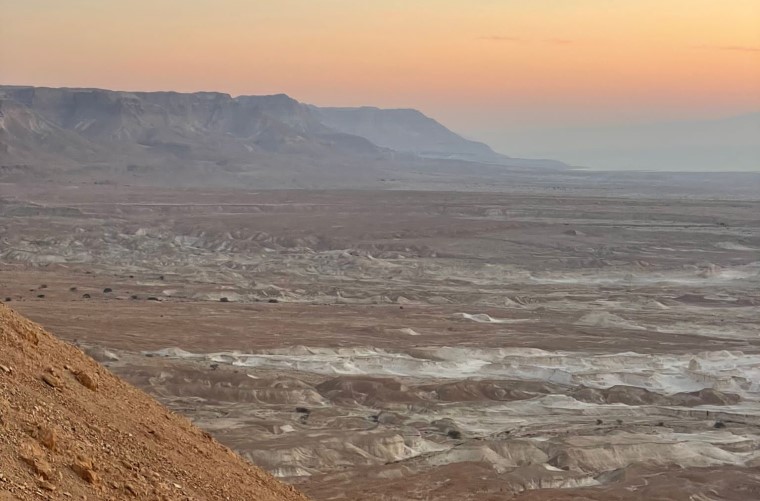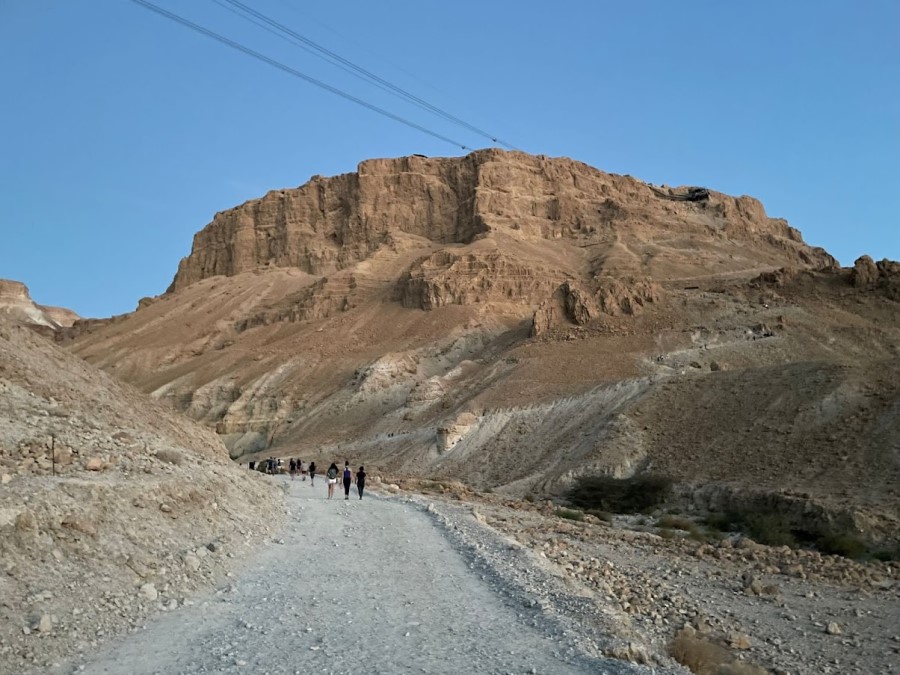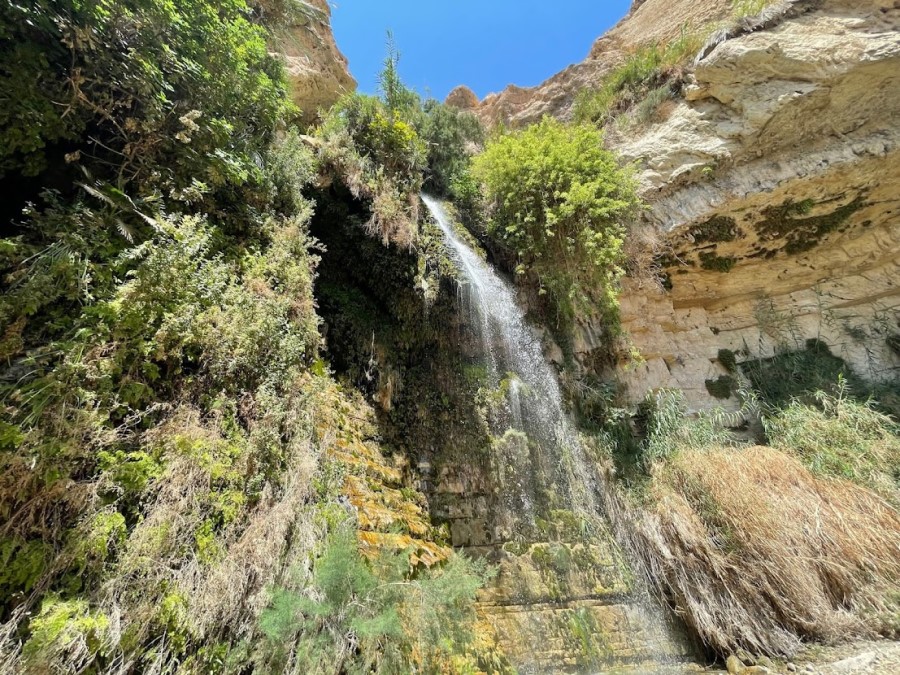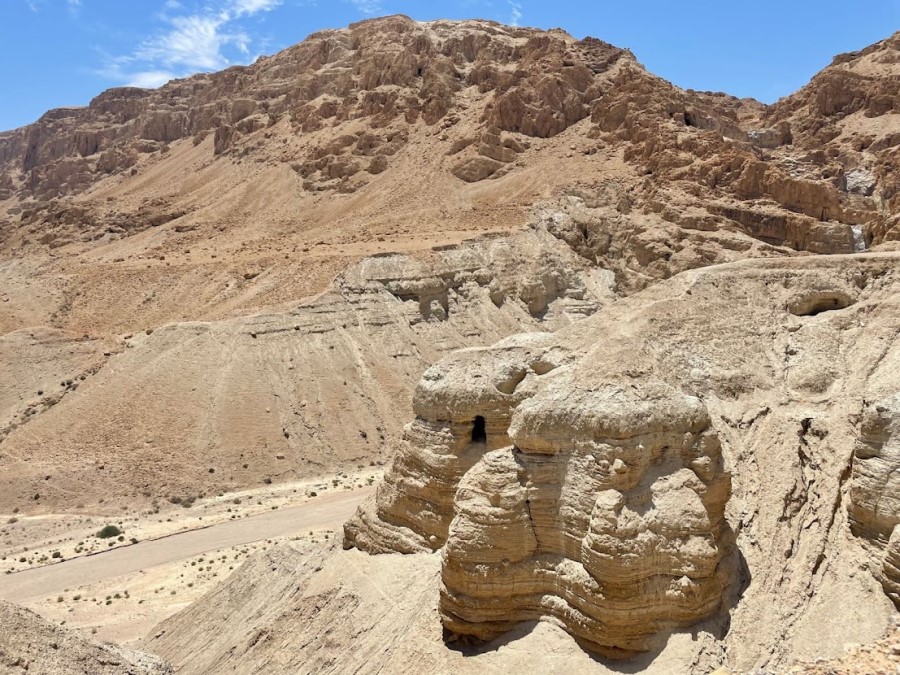Shalom!
Today we finished our foray into Israel’s southern regions by visiting several sites in the Judean Wilderness close to the Dead Sea. It was another sunny, hot day with temperatures in the 90s. Here are a few highlights:
We started the day with a rigorous 5:00am hike up the Snake Path of Masada, Herod’s greatest fortress. Though Masada itself is not featured in the Bible, the structure was another one of Herod the Great’s (the ruler in control during Jesus’ birth, Mt 2:1) spectacular building projects. Once we reached the top, we discovered just how huge this cliff-top complex really is. Herod built two palaces on the plateau, along with various other buildings for defense, self-sufficiency, and leisure. The top of Masada is so large (and with rich enough soil) that ancient inhabitants grew crops up there! Masada was seized from Rome by Jewish rebels as part of the Great Jewish Revolt of AD 66 but was besieged and assaulted by Romans forces in AD 73-74. According to Josephus, when the Roman legionnaires were about to break through, the nearly 1,000 Jewish defenders and residents killed themselves rather than let themselves fall into Roman hands. The Jewish resistance at Masada still inspires many Israelis today.
Our next stop after Masada was one of a much more refreshing nature: Ein Gedi (or Engedi, meaning in Hebrew “Spring of the Young Goat”). Ein Gedi appears several times in the OT, especially in connection with David’s flight and hiding from Saul in the wilderness (e.g. 1 Sam 23:29-24:22; Song 1:14; Ezek 47:10). In the rocky desert wilderness of eastern Judah, a year-round spring like Ein Gedi would have been a literal life-saver as well as refreshment to the soul. We hiked up the gentle slope over which the spring flows, noting several small waterfalls along the way, until we reached the beautiful and lush David Falls (pictured).
One of our last stops for the day was the site of Qumran northwest of the Dead Sea. Though scholars debate the exact nature of the ancient Qumran settlement, Qumran appears to have been a community of 2nd century BC to 1st century AD Essene Jews disillusioned with the religious/political situation in Jerusalem and separating to pursue a pure life while waiting for the coming of the Teacher of Righteousness. The inhabitants of Qumran were likely all celibate men who lived and ate communally (much like later medieval Christian monks). One of the activities to which the men of Qumran devoted themselves was the copying of OT scripture and other religious texts. Their copying work was later discovered in jars within caves near the Dead Sea, and these recovered manuscripts became known as the Dead Sea Scrolls. The discovery of the Dead Sea Scrolls was a majorly important moment in the science of textual criticism of the Bible (that is, comparing surviving copies of the Bible to discern what is the original, inspired text). Before the Qumran scrolls, the oldest OT copies scholars had were from approximately AD 1000, but many of the books and fragments at Qumran were from around 100 BC (1100 years earlier!). Even more significant, researchers discovered that the medieval copies already known did not deviate substantially from the older Qumran scrolls. The Dead Sea Scrolls, therefore, give strong testimony to God’s gracious preservation of his word (cf. Isa 40:8; Mt 24:35).
Tomorrow is another free day, so there will not be a new post. However, in two days, we should be headed up north to the much lusher region of Galilee; I look forward to reporting back to you then.
Lehitraot!




